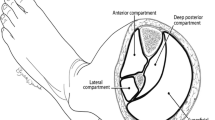Abstract
In recent years nerve transfers have been increasingly used to broaden reconstructive options for brachial plexus reconstruction. Nerve transfer is a procedure where an expendable nerve is connected to a more important nerve in order to reinnervate that nerve. This article outlines the experience of the Scottish National Brachial Plexus Injury Service as our use of nerve transfers has increased. Outcomes have improved for reconstruction of the paralysed shoulder using transfer of the accessory nerve to the suprascapular nerve. Medial pectoral to musculocutaneous nerve transfer has proved reliable for restoration of elbow flexion for patients with C5,6 and C5,6,7 injuries. Problems with nerve transfers include morbidity in the donor nerve territory, co-contraction, and pre-existing injury to the donor nerve. There is a balance of risks in these procedures which should be weighed up in individual cases.

Similar content being viewed by others
References
Lurje A (1948) Concerning surgical treatment of traumatic inury of the upper division of the brachial plexus (Erb’s-type). Ann Surg 127:317–326
Seddon HJ (1963) Nerve grafting. J Bone Joint Surg Br 45B:447–461
Leechavengvongs S, Witoonchart K, Uerpairojkit C et al (2003) Nerve transfer to deltoid muscle using the nerve to the long head of the triceps, Part II: a report of 7 cases. J Hand Surg [Am] 28A:633–638
Oberlin C, Beal D, Leechavengvongs S et al (1994) Nerve transfer to biceps muscle using a part of ulnar nerve for C5-C6 avulsionof the brachial plexus: anatomical study and report of four cases. J Hand Surg [Am] 19:232–237
Brandt K, MacKinnon S (1993) A technique for maximising biceps recovery in brachial plexus reconstruction. J Hand Surg [Am] 18A:726–733
Novak CB, Mackinnon SE, Tung TH (2002) Patient outcome following a thoracodorsal to musculocutaneous nerve transfer for reconstruction of elbow flexion. Br J Plast Surg 55:416–419
Gu Y-D, Wu MM, Zhen YL (1989) Phrenic nerve transfer for brachial plexus notor neurotisation. Microsurgery 10:287–289
Gu Y-D, Ma M-K (1996) Use of the phrenic nerve for brachial plexus reconstruction. Clin Orthop 323:119–121
Gu Y-D, Zhang GM, Chen DS et al (1992) Seventh cervical nerve root transfer from the contralateral side for treatment of brachial plexus root avulsions. J Hand Surg [Br] 17B:518–521
Birch R, Bonney G (1998) Traumatic lesions of the brachial plexus. In: Birch R, Bonney G, Wynn Parry CB (eds) Surgical disorders of the peripheral nerves. Churchill Livingstone, Edinburgh, pp 157–207
Terzis JK, Kostas I (2006) Suprascapular nerve reconstruction in 118 cases of adult posttraumatic brachial plexus. Plast Recon Surg 117:617–629
Chan P, Hems TEJ (2006) Clinical signs of accessory nerve palsy. J Trauma-Injury Infection & Critical Care 60:1142–1144
Teboul F, Kakkar R, Ameur N et al (2004) Transfer of fascicles from the ulnar nerve to the biceps in the treatment of upper brachial plexus palsy. J Bone Joint Surg Am 86:1485–1490
Conflicts of Interest
The author does not have any commercial or other relationships that could influence the outcome of this work.
Author information
Authors and Affiliations
Corresponding author
Rights and permissions
About this article
Cite this article
Hems, T. Nerve Transfers for Traumatic Brachial Plexus Injury: Advantages and Problems. J Hand Microsurg 3, 6–10 (2011). https://doi.org/10.1007/s12593-011-0031-1
Received:
Accepted:
Published:
Issue Date:
DOI: https://doi.org/10.1007/s12593-011-0031-1




